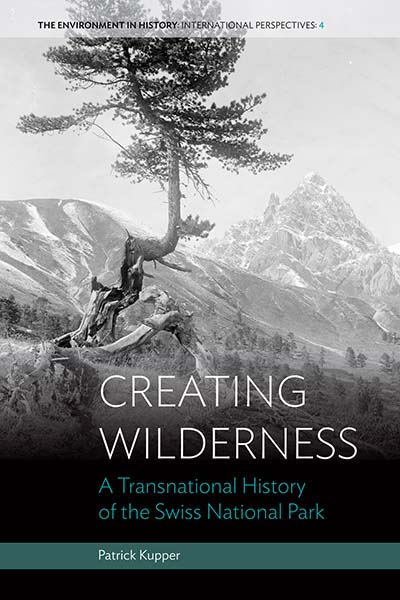 The Swiss National Park is a re-figuring of the American National Park, but with an emphasis on science. This idea of a scientific park is the focus of Patrick Kupper’s Creating Wilderness: A Transnational History of the Swiss National Park, published this month. Below, read an excerpt from the author’s Turku Book Prize-winning book.
The Swiss National Park is a re-figuring of the American National Park, but with an emphasis on science. This idea of a scientific park is the focus of Patrick Kupper’s Creating Wilderness: A Transnational History of the Swiss National Park, published this month. Below, read an excerpt from the author’s Turku Book Prize-winning book.
______________________________
Today’s national parks differ vastly around the globe, not only in appearance but also in purpose: they shall protect biodiversity, landscape, or wilderness and serve for tourism, edification, or research. The term “national park” provides a common denominator for all this diversity, yet the denominator itself is indistinct. How shall one cope with this irritating complexity?
The approach I take in my book is a historical one. My aim is to understand the subject through its history which is entangled in both the global and the local. The Swiss National Park, officially founded in 1914, serves as my case study. This national park won global significance due to the weight placed on strict protection and scientific research. In many places, the Swiss National Park became a valid alternative to the prevailing US park model.
The following excerpt is taken from Chapter 4 Total protection: Philosophy and Practice of “Freely Developing Nature.” It depicts a key moment in 1910 when the park founding Swiss Commission for Nature Protection (SNK) decided to combine what they called “total protection” with the designation “national park.”
Excerpt from Chapter 4:
In the SNK’s annual report for 1909–10, Paul Sarasin envisioned the successful transformation of Val Cluozza “into a total reserve, as I like to call it, . . . in which all life forms, all animals and plants will enjoy utter protection.” A decision was also made “to designate the whole of this area envisaged as a nature park as a Swiss national park.” The use of the descriptor “total” and the designation “national park” was no coincidence. In adopting the term “national park,” the founders were also mindful of the need for distinction. “National park” was commonly associated with America, but the staging of nature for the benefit of visitors that was typical of American parks did not fit the vision of the Swiss park founders. Consequently, they urgently wished to find a new term more reflective of their own goals. The cast-iron plaques that the commission put up at the borders of its protected areas beginning in 1910 were inscribed as follows: “Swiss National Park. Total protection of animals and plants. The Commission.” The plaque was written in French, which the SNK believed could be “understood by all concerned nations.”
The park founders advocated very effectively. Their lively publications and the many lectures they gave both home and abroad helped them to rapidly make this (at the time) unusual and radical concept more widely known. Total, or absolute, protection became an international trademark and served to set the Swiss National Park model apart. As early as 1912, only two years after the first area had been placed under protection, the British science journal Nature not only proclaimed the park the most important nature reserve in Europe, “but in some respects [it] excels the celebrated American Reservations, which are only partially reserved, and do not form one unbroken block.” The Swiss park founders also took every opportunity to distinguish their concept from that of the Americans. They might not have created the first national park in the world, but it was the first of its kind: the “first total, fully protected large reserve on Earth.”
__________________________
Patrick Kupper is Senior Lecturer for environmental history and history of science and technology at ETH Zurich. He authored Atomenergie und gespaltene Gesellschaft: Die Geschichte des gescheiterten Projektes Kernkraftwerk Kaiseraugst (2003), co-authored Transforming the Future: ETH Zurich and the Construction of Modern Switzerland 1855–2005 (2010) and Geschichte des Nationalparks Hohe Tauern (2013), and co-edited the volume Civilizing Nature: National Parks in Global Historical Perspective (2012).
